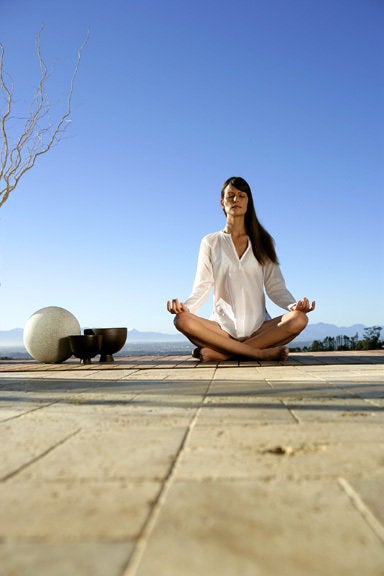
A few words to characterize most human brains: busy, loud, stubborn, and scared. For many of us, our overactive brains keep us from opening to our deepest, most loving, most comfortable selves. When we are not open to these aspects of ourselves, we either hide by hibernating (literally or figuratively), or we stay busy with hilariously misaligned priorities. So busy that we're not sleeping as we should.
In myself, when my priorities are askew [I'm procrastinating, fast-forwarding, not paying attention to the present abundance], I'm actually just scared, and i don't sleep. The fear that keeps many of us awake: that we aren't seen, heard, felt - and therefore alive. As disorienting as this fear may be, it is quite human, but it gets us doing the darndest things, into the wee hours of the morning, and not sleeping.
Tangentially, if you're not currently sleeping well and you're tripping over yourself about it as we all do sometimes, play your guitar [or whatever instrument you've always wanted to pick up]. At least it becomes time more sweetly spent.
If and when you want to try a practice that may help you reclaim some nourishing rest, read on.
After careful observation, I'm here to report that the only break from this fear -- whatever form it's taking in your life -- is breathing consciously. Breathing delivers me into the present moment. And breathing is key to getting your healing rest.
When my mind has such a hold that I cannot breathe, Reiki returns me to my breathing.
The brief practice below incorporates Reiki, which helps us breathe, combined with conscious breathing, which helps us sleep.
Consistency equals efficacy here; you'll feel the cumulative effects.
1. For everyday situations (walking, waiting, sitting -- right now), place your left hand over your heart, center of your chest, fingers spread, palm flat. With your hand there, breathe into and around your brain. Use your breathing to make space between your actual brain and your skull (be creative with the visual and you will feel it in your softening eyes); then you may even breathe some more space between the two hemispheres of your brain. Keep your brain porous, spacious, and notice how that quality of openness is actually a reflection of your spacious heart below. Hold the space and notice your thought-pace slow down. Use this in meetings, in conversations, with children. Or several breaths right now.
2. Ideally done lying down or reclining, try this placement right now if you can. Place one or both hands on the top crown of your head, one in front of the other, elbows out to the sides, and breathe deeply into your heart. Broaden your heart; widen the space in the center of your chest laterally. As you breathe, maintain your expansive heart and notice the reflection of that opening higher up, in your mind, as well. Put some attention on the resonance in and around your hands.
Take a few breaths here.
2A. When you're using this placement specifically before sleep: lying on your back, place your hands on the top crown of your head and let your elbows rest out to the sides on your pillow. Let your eyes relax [closed or open, as you wish] and review the scenes of your day with no judgment: where have you been, how did you speak, what did you offer? Be objective and keep your heart expansive as you breathe here. This is information-gathering, not judgment time.
The aim of this nightly review is to learn your habitual tendencies with your heart wide open-- what they look like, sound like, their consequences -- so they don't continue to infect your every interaction. You'll see which attitudes drain you and which nurture you. Whether you're horrified, pleased, psyched, mortified upon seeing your behaviors; see those judgments, and remember that no judgment can take you over once you've seen it clearly as you're breathing generously. Notice you're sad: there is sadness, say hello- sadness is present, but it's not YOU. Notice you're thrilled! Greetings, thrilled, that's what that feels like; return to your breathing and simply do whatever needs to be done next.
Your attention on your breathing sits right in the middle of any two strong polarities; if you're breathing, you can see more clearly what's required of you. My teacher recommends 5 minutes for the review; it helps me to have my hands on my head as I watch, and to breathe until my heart feels softer and more open even in the face of what I'm seeing.
Both of these hand placements are incorporated into a full Reiki self-treatment.
Reiki: A Comprehensive Guide offers an enlightening history of this profoundly healing practice as well as details of the full self-treatment. To learn about Reiki, meet Pamela Miles, who's committed herself to Reiki's widespread scientific recognition and medical use in hospitals and critical-care environments [and, very thankfully, in my home].
This practice must be for yourself only - an intimate, quiet practice of self-care.
We must fearlessly breathe through each frightfully sabotaging thought, one at a time, in order to know what real acceptance looks like. It takes longer on some nights, but now we have a practice, a vessel, a direction for a rambunctious brain.
Is such a concrete practice of self-nourishing, Self-acceptance the most efficient salve for sleeplessness? Or is it your 2 a.m. solitary guitar strumming? Let me know what's true for you.
Fun assignment: write the following phrase on 5 small sticky notes and place them at eye level in your kitchen, your fridge, your mirrors, your door.
Take care of yourself.